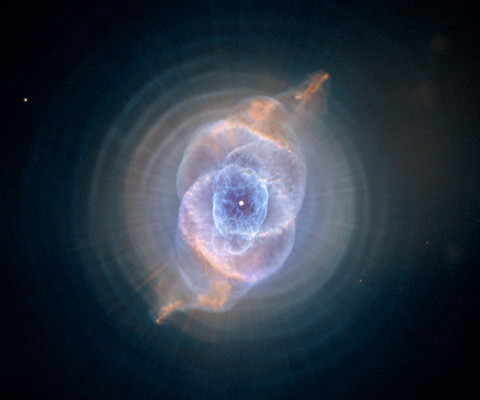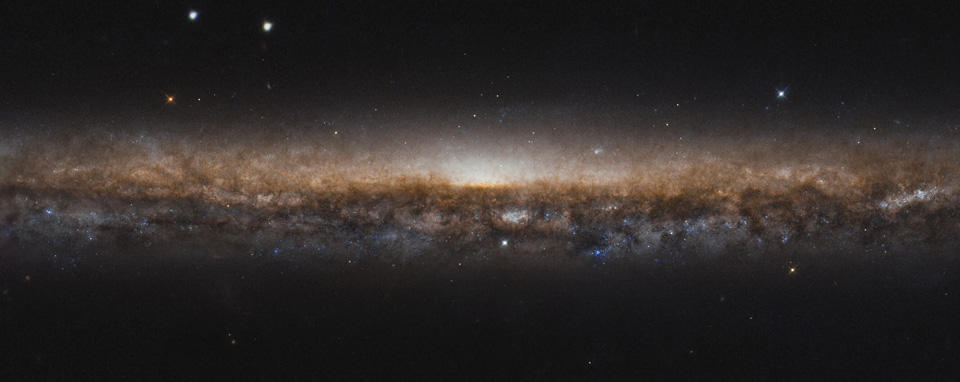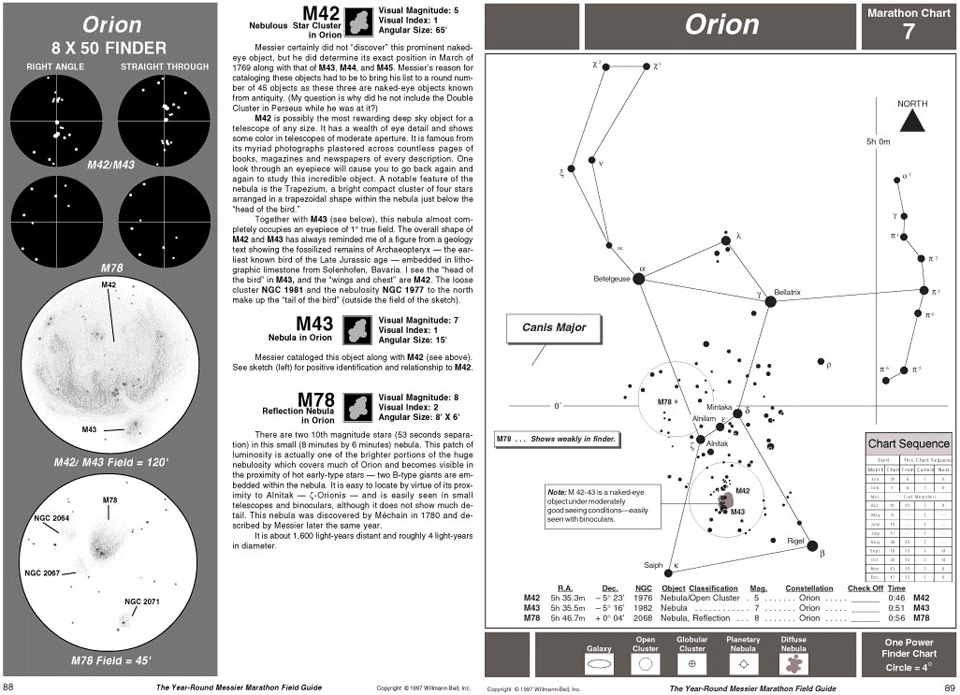Introduction
By no means complete, June's mini guide that follows provides notes for exploring various interesting deep sky objects (DSOs) and lists other items of interest useful to the amateur astronomer.
Entries can be interpreted based on designation, description and magnitude as follows.
Designation – Description – Magnitude:
★ Telescopes 10-inch aperture minimum.
★★ Telescopes 6-inch to 9-inch aperture.
★★★ Binoculars (50mm+ aperture) and telescopes
3-inch to 5-inch aperture.
A collimated instrument, favourable atmospheric conditions, dark skies and dark-adapted eyes are assumed.

NGC 6543 nebula. Credit: ESA, NASA, HEIC and The Hubble Heritage Team (STScI/AURA).
About NGC 6543 (Cat's Eye) nebula
In this detailed view from the NASA/ESA Hubble Space Telescope, the so-called Cat's Eye Nebula looks like the penetrating eye of the disembodied sorcerer Sauron from the film adaptation of "Lord of the Rings."
The nebula, formally catalogued NGC 6543, is every bit as inscrutable as the J.R.R. Tolkien phantom character. Although the Cat's Eye Nebula was among the first planetary nebula ever to be discovered, it is one of the most complex planetary nebulae ever seen in space. A planetary nebula forms when Sun-like stars gently eject their outer gaseous layers to form bright nebulae with amazing twisted shapes.
Credit: ESA, NASA, HEIC and The Hubble Heritage Team (STScI/AURA).
| June deep sky objects |
| Hercules constellation |
|
M13
|
The Hercules Cluster is perhaps the finest globular cluster in the Northern Hemisphere with around 400,000 members spread over 140 light years of space. It appears as a fuzzy ball of light in binoculars.
|
7.0
|
★★★
|
|
M92
|
Globular with around 300,000 members. It appears as a fuzzy ball of light in binoculars.
|
7.5
|
★★
|
|
NGC6207
|
Barred spiral galaxy visible in an 8-inch instrument under dark skies.
|
11.3
|
★★
|
|
NGC6210
|
Planetary nebula with a blue tint. Higher magnifications reveal the interesting structure of the nebula in moderate size scopes.
|
9.0
|
★★★
|
|
NGC6229
|
Globular cluster visible in moderate size instruments.
|
8.69
|
★★
|
| Serpens constellation |
|
M5
|
This globular cluster will appear as small fuzzy patch in binoculars.
|
7.0
|
★★★
|
| Draco constellation |
|
NGC6503
|
Elongated galaxy that will show in smaller instruments. Larger instruments will provide a very pleasing view.
|
10.2
|
★★
|
|
NGC5907
|
The Splinter Galaxy is visible in instruments of 6-inch aperture and above.
|
11.1
|
★★
|
|
NGC6543
|
The Cat's Eye is a bright planetary nebula. Large scopes may hint a pale blue colour and should be able to view its central star at higher magnifications.
|
8.8
|
★★★
|
|
NGC4565
|
The largest edge-on galaxy as seen from Earth. It appears as a long streak of light with a bright core and a dark lane running across its length. Large instruments should be able to trace the dark lane in its entirety under dark skies.
|
10.3
|
★★★
|
| Ophiuchus constellation |
|
M9
|
Dense and bright globular cluster partially obscured by interstellar dust. It appears as a tiny patch of light in binoculars.
|
9.0
|
★★★
|
|
M10
|
Well resolved globular cluster that is easily visible in binoculars.
|
7.5
|
★★★
|
|
M12
|
Globular cluster. Visible in binoculars in the same field of view with the M10.
|
8.0
|
★★★
|
|
M14
|
Large and bright globular cluster. Visible in binoculars it will require a large instrument to resolve its members.
|
9.5
|
★★★
|
|
M19
|
Globular cluster that appears as a faint patch of light in binoculars.
|
8.5
|
★★★
|
|
M62
|
Globular cluster that appears as a faint patch of light in binoculars. The cluster is home to at least 3 fast rotating stars known as pulsars.
|
8.0
|
★★★
|
|
M107
|
Globular cluster possibly obscured by interstellar dust.
|
10.0
|
★★★
|
|
IC4665
|
Open cluster visible in binoculars.
|
4.2
|
★★★
|
|
NGC6633
|
Open cluster visible in binoculars with around 25 members.
|
5.5
|
★★★
|
|
IC4756
|
Open cluster visible in a 6-inch instrument with around 50 members.
|
4.59
|
★★
|
|
NGC6309
|
A quadrupolar planetary nebula visible in instruments of 10-inch aperture or above.
|
10.8
|
★★
|
|
|
Designation, Description, Magnitude
|
★ Telescopes 10-inch aperture minimum.
★★ Telescopes 6-inch to 9-inch aperture.
★★★ Binoculars (50mm+ aperture) and telescopes 3-inch to 5-inch aperture.
|
The night sky
Under excellent conditions over 2,000 stars can be seen with the unaided eye but only a few hundred of these are prominent enough to be useful in navigating the night sky, these are normally included in amateur sky maps and digital planetarium programs like the SkySafari, Stellarium, The Sky, Starry Night, Winstars 2 etc. Some stars will show colour that is useful in identifying them. For example, Antares, Betelgeuse and Aldebaran are orange/red where Vega, Rigel and Spica appear as blue/white.
Stars that form easily recognisable patterns have been given names and are referred to as constellations. Of these, the brightest stars act as beacons and can be used to effectively navigate the night sky during the different months of the year. To that extent stars can be particularly useful in locating other interesting objects nearby normally viewable through binoculars or larger instruments.
Planets and their satellites, comets and meteors move independent of the night sky background and at comparatively high speeds. They are therefore very difficult or impossible to reference to any star. However, planets like Jupiter, Saturn, Venus and Mars as well as the Moon are easy to spot with the unaided eye and in the case of the larger planets and especially the Moon, even medium size binoculars will reveal a limited degree of detail.
NGC 5907 spriral galaxy
The galaxy known as NGC 5907 stretches wide across this image. Appearing as an elongated line of stars and dark dust, the galaxy is categorised as a spiral galaxy just like our own Milky Way. In this new image from the NASA/ESA Hubble Space Telescope, we don’t see the beautiful spiral arms because we are viewing it edge-on, like looking at the rim of a plate. It is for this reason that NGC 5907 is also known as the Knife Edge Galaxy.

NGC 5907 spriral galaxy. Credit: ESA/Hubble & NASA, R. de Jong. Acknowledgement: Judy Schmidt (Geckzilla).
The Knife Edge Galaxy is about 50 million light-years from Earth, lying in the northern constellation of Draco. Although not visible in this image, ghostly streams of stars on large arching loops extend into space, circling around the galaxy; they are believed to be remnants of a small dwarf galaxy, torn apart by the Knife Edge Galaxy and merged with it over four billion years ago.
Credit: ESA/Hubble & NASA, R. de Jong. Acknowledgement: Judy Schmidt (Geckzilla).
Sky conditions
The prevailing sky conditions will have a significant effect on what you can see through any instrument and binoculars. As such if you live near a city the light pollution can make it difficult to locate and observe most DSOs. The Moon and a hazy sky will also have a negative effect.
For best results observe from a dark site and under clear transparent skies without the moon being present. Once your eyes have been accustomed to the dark conditions (this takes around 20-30 minutes) you should be able to enjoy the night sky at its best.
Filters
Filters will help to an extent and lager instruments will benefit more from them. Light pollution filters would help and photo-visual UHC (nebula filters) would be worth considering.
Printed aids
A huge number of printed aids exist in terms of deep sky maps and books. An excellent printed guide for people new in astronomy is The Year-Round Messier Marathon Field Guide published by Willmann Bell Inc.
In this large format hard-back book, the author, Harvard Pennington shows how to:
- Learn 17 bright finder stars and 17 prominent finder constellations so you will know where to look for all 110 Messier objects.
- Align a sighting device such as an 8x50 finder scope or the Telrad® so that you can point your instrument rapidly and with assurance toward all of the Messier objects.
- Calibrate your instrument so that you know exactly how much sky you see through your finder and through the eyepiece of your instrument.
- Find all of the Messier objects using the maps, drawings and descriptions in this book. You will know exactly where to point your instrument, and what the object should look like when you find it.

Extract from The Year-Round Messier Marathon Field Guide
published by Willmann Bell Inc.
Related topics:
night sky, deep sky object guide, June



